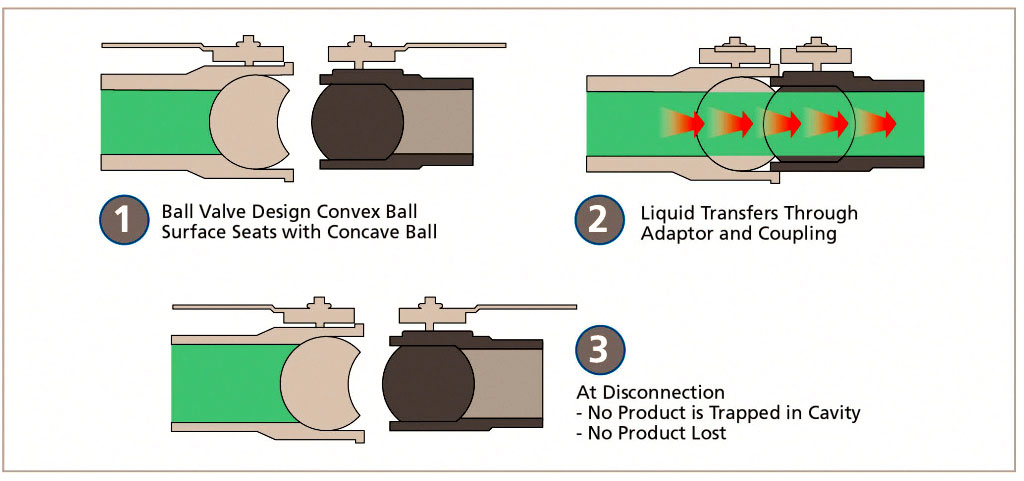The ball valve is a common valve in many piping systems used to interrupt, start, or redirect the flow of liquids or gases. These valves are often used in dry disconnect couplings used to handle hazardous chemicals.
The valve has a ball inside it that has a hole in its core. The position of the ball allows either an on or off state. On state creates a transfer of product and a closed-off position stops the flow of product.
The EPA does have some regulations regarding valves in the oil industry. It is important to regularly check for guidance documents to stay in compliance.
Ball Valve Couplings
The ball-valve operation disconnect allows a convex ball to seat with a convex ball when the valve is opened (Step 1). This straight-through design allows the liquid to transfer through the adaptor and coupling with no reduction in flow rate (Step 2). Upon disconnection there are no cavities created in which the product can nest, meaning no product will be spilled (Step 3). This no-spill operation is accomplished through the use of five independent and redundant mechanical interlocks that require deliberate sequential action by users, thereby eliminating unintentional spills and catastrophic chemical releases.
A ball valve has two states. It is either open or closed.


























